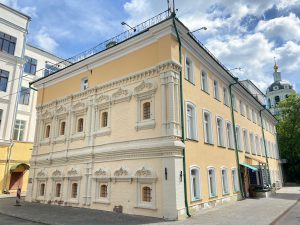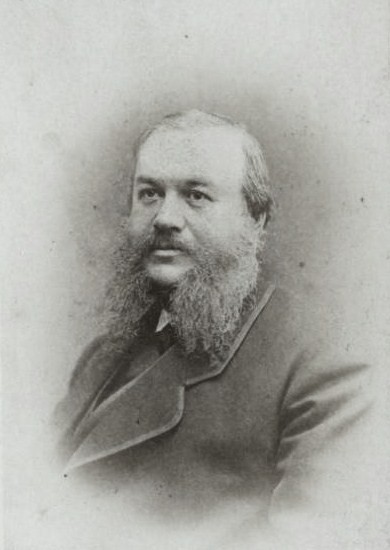Chambers
of Prince A.A. Shcherbatov

In the courtyard of the Mosgortrans building complex, there is a three-story building which facade, facing the embankment, was designed in the strict forms of classicism. The end parts of the building are decorated in the magnificent patterned style of the late 17th century. This unique combination arose as a result of restoration work carried out in 2002-2004. Previously, the ancient chambers were hidden behind a laconic decoration from the 19th century, and could only be identified through control measurements organized prior to preparing the building for demolition. The discovery of this significant historical site has become one of the most important events in Moscow’s local history in recent decades. The site, located at the intersection of Middle and Lower Gardeners’ Streets, was often flooded during the first half of the 17th century, preventing stone construction. It was only after the construction of a system of drainage channels, called “rovushka”, between the Moscow River and the Staritsa that active development of the area began. These drainage channels gave the name to the embankment. Although documentary evidence regarding the time of construction and ownership of the stone buildings has not been preserved, architectural features suggest that they were built in the last decades of the 17th century. The original two-story building had exterior porches and richly decorated arches and tents. The chambers were first recorded on a plan of Moscow created by Gorikhvostov in the 1760s. In the 18th and early 19th centuries, the site’s layout changed: the original building was hidden behind newer structures, first wooden and then stone. Additionally, an attic floor was added and the facade was redecorated many times. Documents dating back to the 1790s and later indicate that the house belonged to various noble families who leased it to merchants. In the second half of the 19th century, a major reconstruction of the building took place, designed by the architect Mikhail Chichagov. The owner of the house at that time was Prince Alexander Shcherbatov, who was also the mayor. Later, parts of the complex housed the tea trading company Botkin and Sons and the city tram department. By the end of the 90s of the last century, the building had lost its original decor but retained the decoration from the second half of the 19th century. It fell into disrepair and was considered for demolition. However, during measurements carried out in 2000 by Irina Izosimova and Alexey Zhdanov, it was determined that the building was actually older than previously thought and belonged to Prince Shcherbatov. Thanks to this, the restoration, carried out according to the Central Committee’s project, preserved two historical eras. The facade facing the embankment was restored in accordance with Chichagov’s design, while the end parts of the building acquired an appearance characteristic of the late 17th century.
Address: Moscow, Raushskaya nab., 22, p. 2

